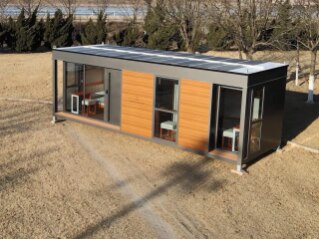-
Sections
-
Keywords
New natural histories: Jeanne Gang’s Gilder Center is a radical manifesto
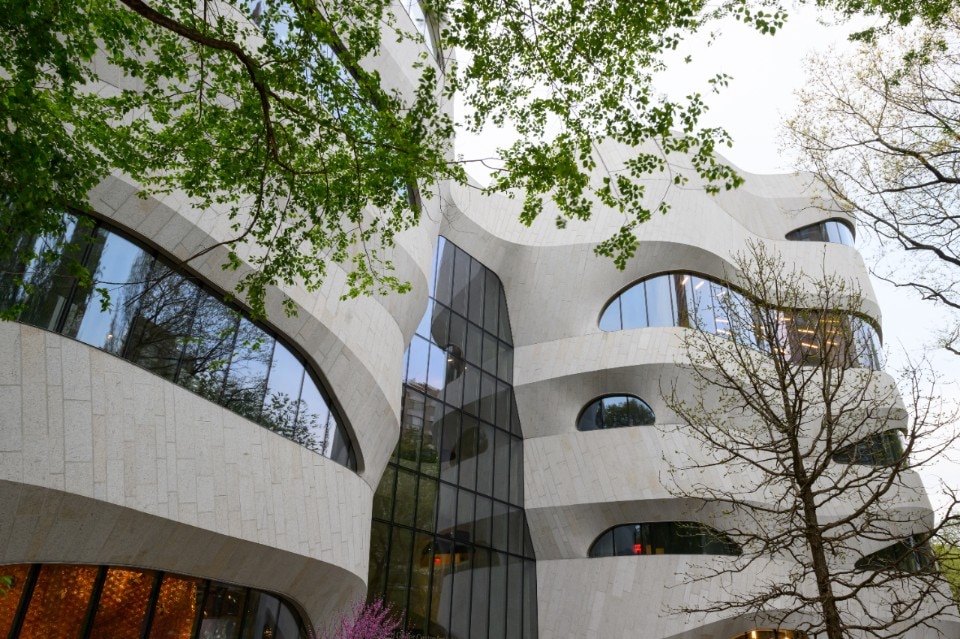
Studio Gang, Richard Gilder Center for Science, Education, and Innovation, American Museum of Natural History, 2023
Entrance on Columbus Avenue
The undulating façade of the Richard Gilder Center for Science, Education, and Innovation is clad in Milford pink granite and features a diagonal stone-panel pattern that evokes both the phenomenon of geological layering and the richly textured, coursing surface of the stone masonry on the 77th Street side of the Museum.
Alvaro Keding/© AMNH
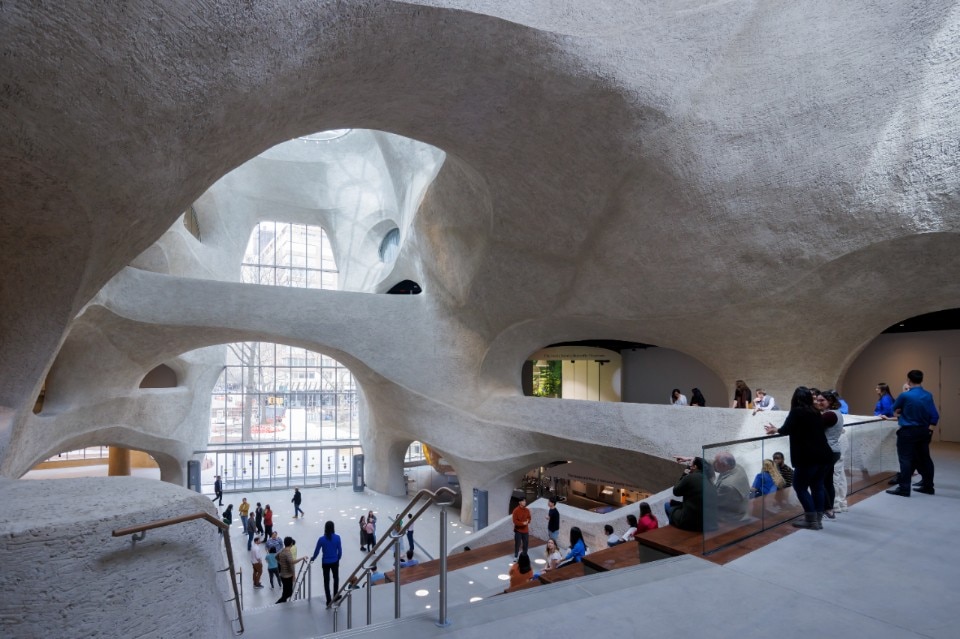
Studio Gang, Richard Gilder Center for Science, Education, and Innovation, American Museum of Natural History, 2023
The Staircase in the Kenneth C. Griffin Exploration Atrium
From the top of the staircase in the Kenneth C. Griffin Exploration Atrium of the Richard Gilder Center for Science, Education, and Innovation, visitors can take in the full scope of the five-story Griffin Atrium, including spectacular views of the third-floor bridge, apertures throughout, the Susan and Peter J. Solomon Family Insectarium on the first floor, and the Davis Family Butterfly Vivarium on the second level. The staircase is designed with deep treads and high risers on one side, allowing visitors to gather for rest and conversation and providing seating for programs.
Photo by Iwan Baan
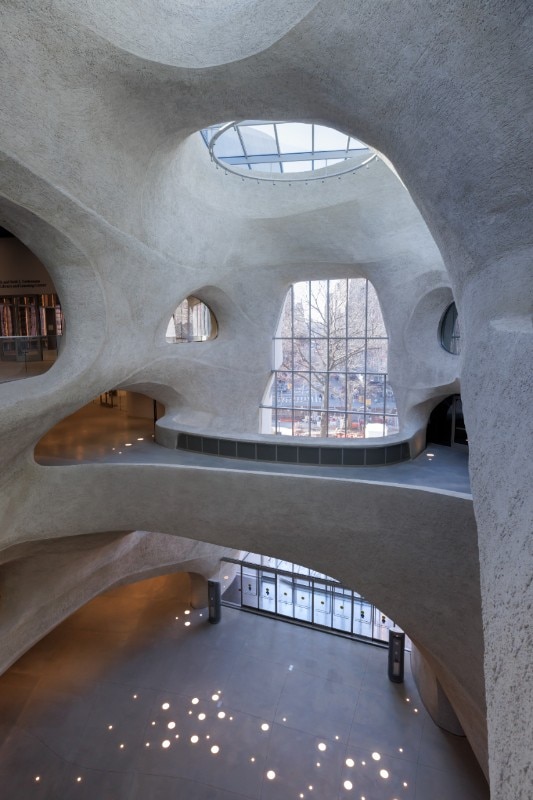
Studio Gang, Richard Gilder Center for Science, Education, and Innovation, American Museum of Natural History, 2023
Architecture in the Kenneth C. Griffin Exploration Atrium
Designed by Studio Gang, the Kenneth C. Griffin Exploration Atrium is the gateway to the new Richard Gilder Center for Science, Education, and Innovation. This five-story space is illuminated by towering windows, skylight apertures, and inset floor lights speckled throughout. From this fourth-floor vantage point, visitors can take in the full scope of the Griffin Atrium, with sightlines to new galleries and spaces including the third-floor bridge and the David S. and Ruth L. Gottesman Research Library and Learning Center on the fourth floor.
Photo by Iwan Baan
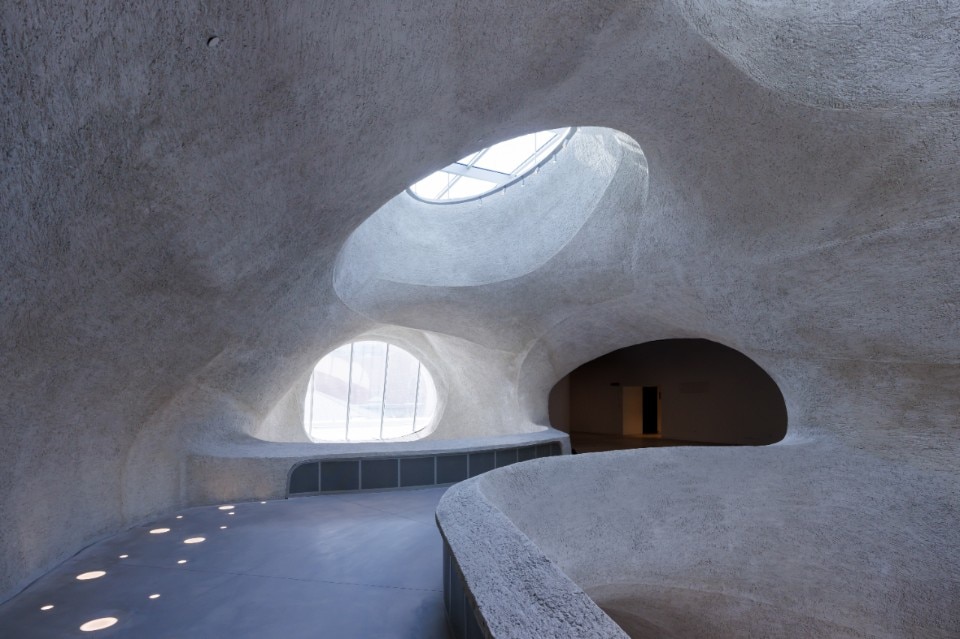
Studio Gang, Richard Gilder Center for Science, Education, and Innovation, American Museum of Natural History, 2023
Fourth-Floor Bridge Links and Connections
Bridges in the new Richard Gilder Center for Science, Education, and Innovation offer visitors a variety of stunning vantage points from which to explore the space. This fourth-floor bridge features views of the Kenneth C. Griffin Exploration Atrium and links the fourth-floor education suite, The Studio, to the new David S. and Ruth L. Gottesman Research Library and Learning Center and the connection to the Museum’s Hall of Vertebrate Origins
Photo by Iwan Baan
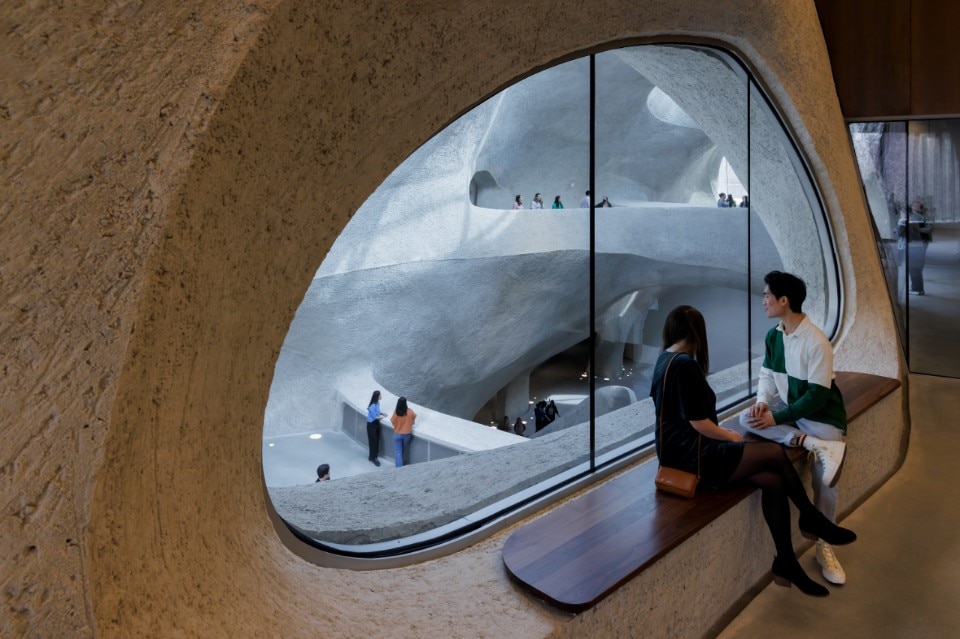
Studio Gang, Richard Gilder Center for Science, Education, and Innovation, American Museum of Natural History, 2023
Window Aperture in the David S. and Ruth L. Gottesman Research Library and Learning Center
The Reading Room of the David S. and Ruth L. Gottesman Research Library and Learning Center in the new Richard Gilder Center for Science, Education, and Innovation offers stunning views of the building’s third-and fourth-floor bridges and provides visitors with a contemplative space to explore the library’s resources.
Photo by Iwan Baan
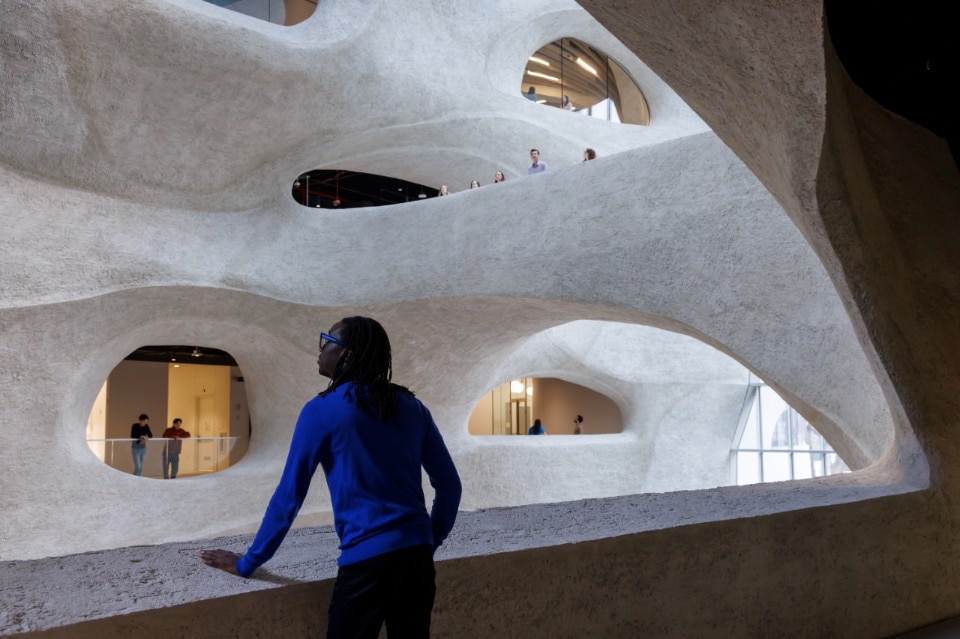
Studio Gang, Richard Gilder Center for Science, Education, and Innovation, American Museum of Natural History, 2023
Sightlines from Second-Floor Aperture
Apertures throughout the Richard Gilder Center for Science, Education, and Innovation create inviting views and offer alluring sightlines to visitors. From this vantage point outside of the Davis Family Butterfly Vivarium on the second floor, visitors can look out over the Kenneth C. Griffin Exploration Atrium, watch others walk across the third-floor bridge to the Invisible Worlds immersive experience, and glimpse the David S. and Ruth L. Gottesman Research Library and Learning Center on the fourth floor.
Photo by Iwan Baan
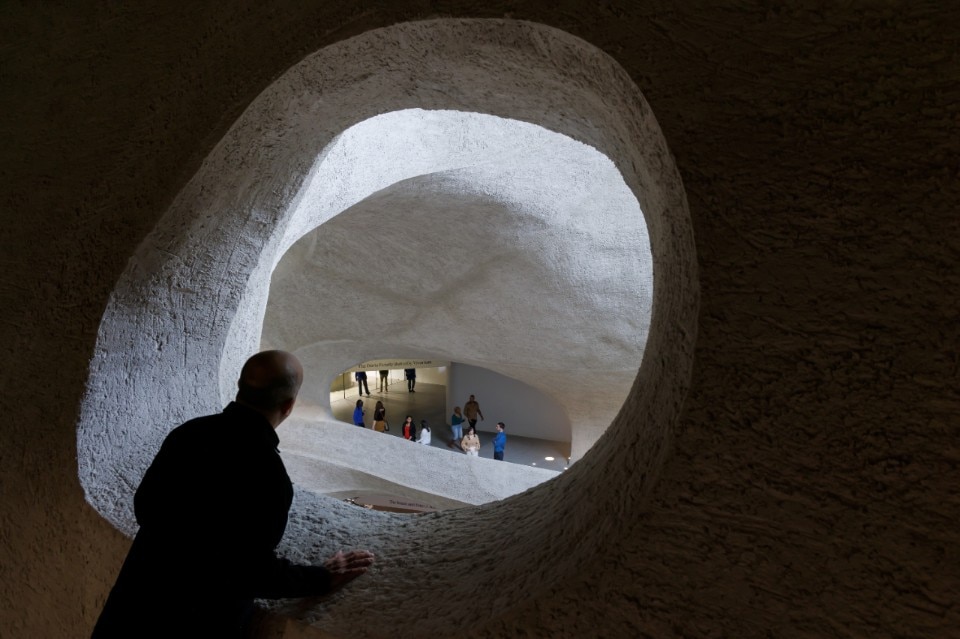
Studio Gang, Richard Gilder Center for Science, Education, and Innovation, American Museum of Natural History, 2023
Third-Floor Aperture
Apertures throughout the Richard Gilder Center for Science, Education, and Innovation offer visitors opportunities to take in the building from exciting new vantage points. This round, third-floor aperture gives visitors a view to the Davis Family Butterfly Vivarium on the second floor.
Photo by Iwan Baan
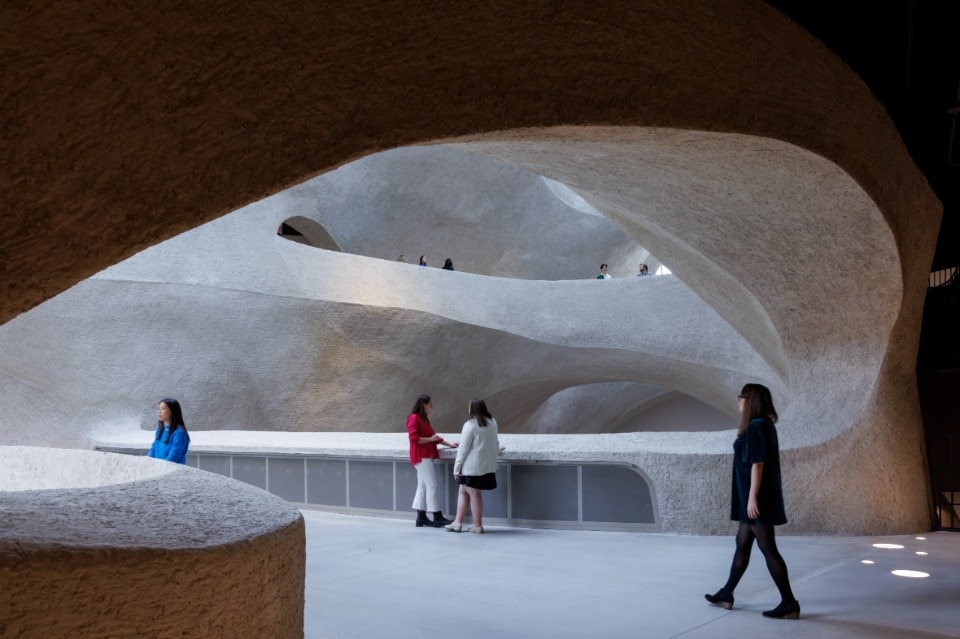
Studio Gang, Richard Gilder Center for Science, Education, and Innovation, American Museum of Natural History, 2023
Third-Floor Bridge to the Invisible Worlds Immersive Experience
The Richard Gilder Center for Science, Education, and Innovation enhances circulation throughout the entire Museum campus. The Gilder Center’s third and fourth floors are linked by bridges, which offer spectacular views of the Kenneth C. Griffin Atrium as well of Theodore Roosevelt Park and the Upper West Side. This third-floor bridge leads visitors to the entrance of the new Invisible Worlds immersive experience.
Photo by Iwan Baan
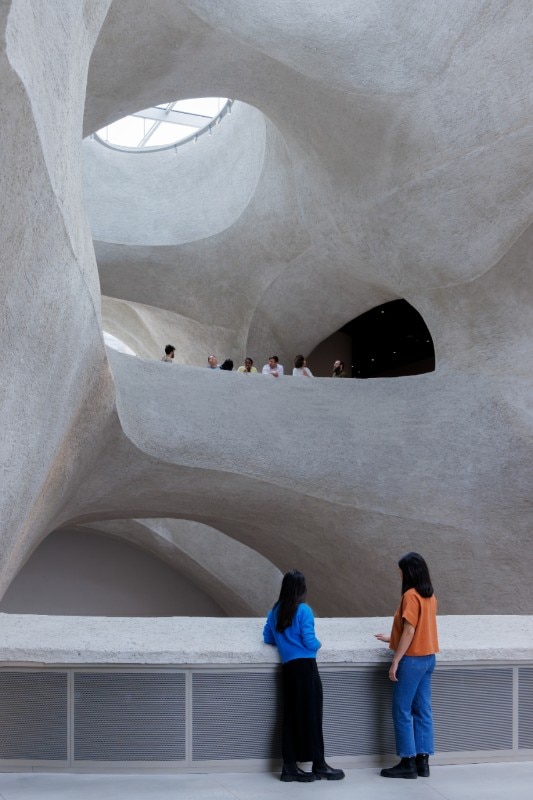
Studio Gang, Richard Gilder Center for Science, Education, and Innovation, American Museum of Natural History, 2023
Sightlines from Third-Floor Bridge
The Richard Gilder Center for Science, Education, and Innovation’s new exhibitions and spaces are connected by two bridges on the third and fourth floors, which offer spectacular views of the Kenneth C. Griffin Atrium as well as of Theodore Roosevelt Park and the Upper West Side. This third-floor bridge leads visitors to the entrance of the new Invisible Worlds immersive experience.
Photo by Iwan Baan
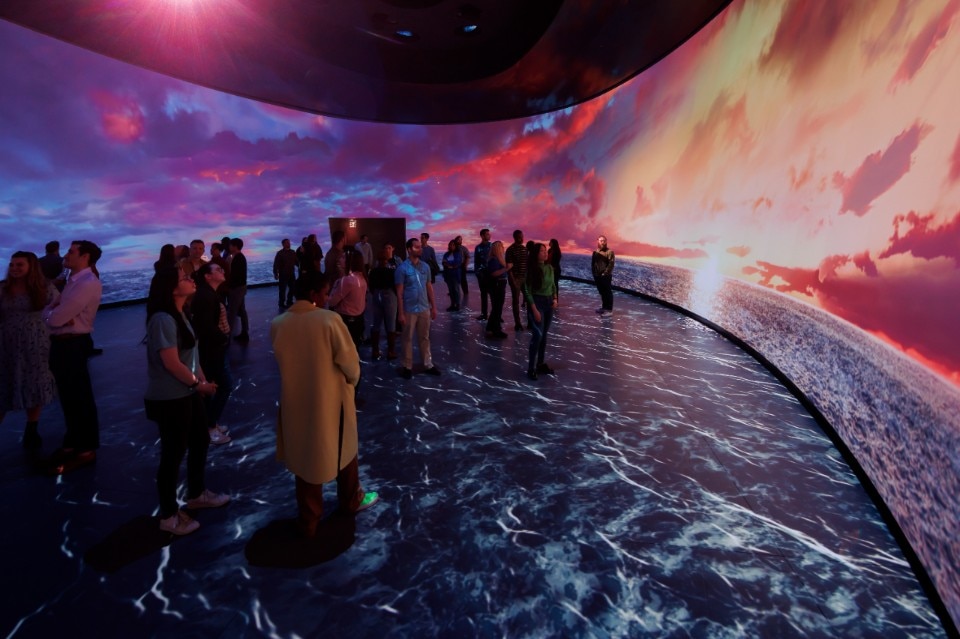
Studio Gang, Richard Gilder Center for Science, Education, and Innovation, American Museum of Natural History, 2023
The Invisible Worlds Immersive Experience
Invisible Worlds, an immersive and interactive 360-degree science-and-art experience in the new Richard Gilder Center for Science, Education, and Innovation, offers a breathtakingly beautiful, scientifically rigorous, and engaging view into networks of life at all scales. This 12-minute looping experience is powered by scientific data and celebrates the richness of life’s diversity and the basic building blocks of life, including DNA, that connect all living things on our planet. This scene in the Invisible Worlds experience transports visitors to San Diego Bay, California, to experience the nightly commute of plankton, krill, and jellyfish to the sea surface.
Photo by Iwan Baan
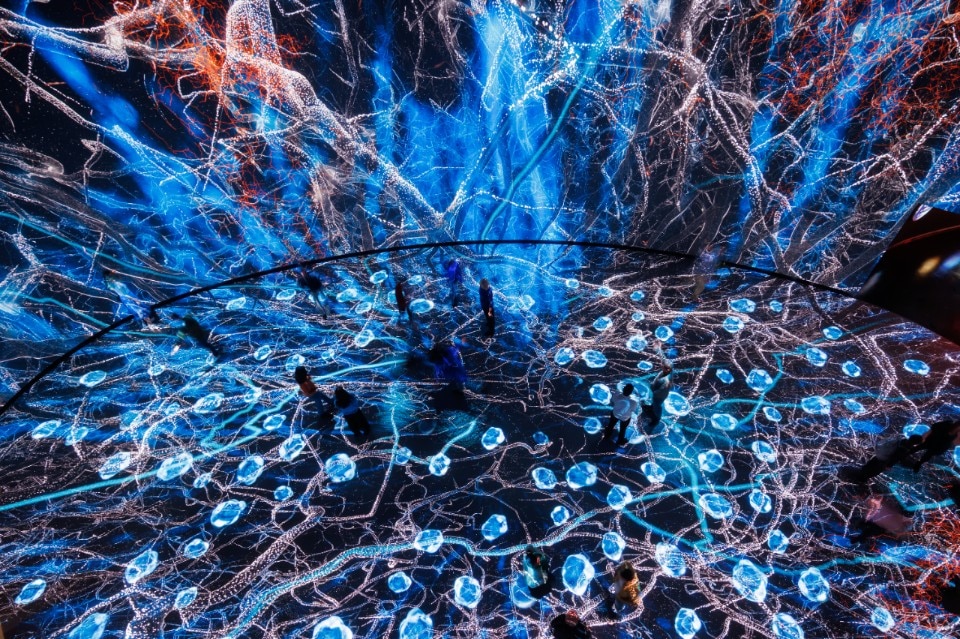
Studio Gang, Richard Gilder Center for Science, Education, and Innovation, American Museum of Natural History, 2023
The Invisible Worlds Immersive Experience
Invisible Worlds, an immersive and interactive 360-degree science-and-art experience in the new Richard Gilder Center for Science, Education, and Innovation, offers a breathtakingly beautiful, scientifically rigorous, engaging view into networks of life at all scales. This 12-minute looping experience is powered by scientific data and celebrates the richness of life’s diversity and the basic building blocks of life, including DNA, that connect all living things on our planet. This scene in the Invisible Worlds experience transitions from a view of connections at the cellular level to those in the root network in the soil of a rainforest.
Photo by Iwan Baan
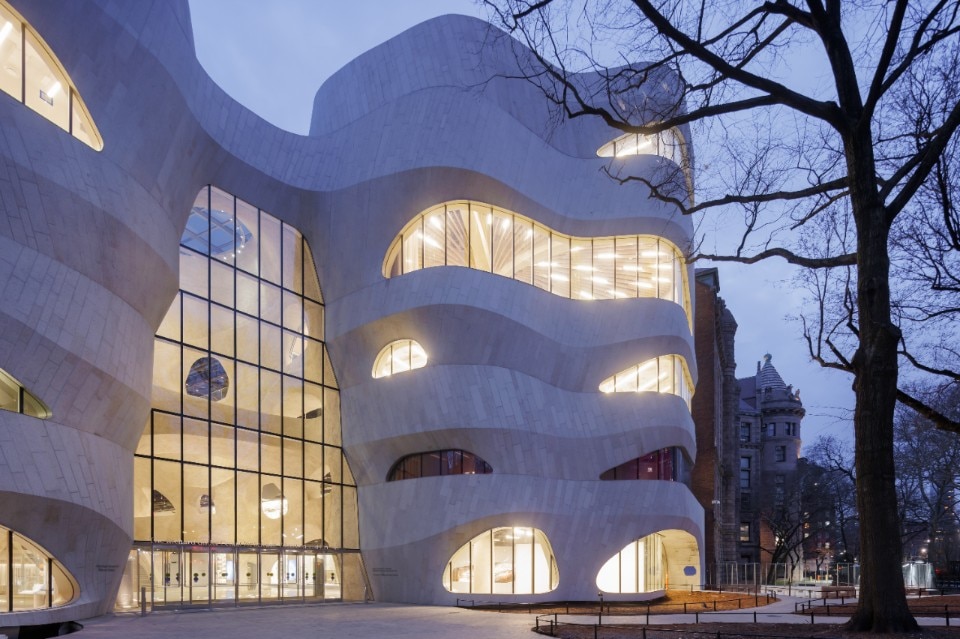
Studio Gang, Richard Gilder Center for Science, Education, and Innovation, American Museum of Natural History, 2023
The Gilder Center at Dusk
At dusk, the curved windows of the Richard Gilder Center for Science, Education, and Innovation exude an inviting soft glow. From this vantage point in the renovated section of Theodore Roosevelt Park, the Gilder Center can be viewed in the context of the Museum’s existing campus, visible just beyond the Gilder Center’s gently undulating façade.
Photo by Iwan Baan


